Anatomy and Physiology Neuromuscular Membrane Potentials
1/26
There's no tags or description
Looks like no tags are added yet.
Name | Mastery | Learn | Test | Matching | Spaced |
|---|
No study sessions yet.
27 Terms
Motor neurons, sensory neurons, interneurons
Motor/efferent: transmit signal from brain and spinal cord TO muscles and joints
Sensory/ afferent: transmit signals from sensory receptors to CNS
interneurons: mediators between sensory and motor neurons
What is the myelin sheath?
fatty insulation on the axon of the neuron
NOT on all neurons
make signals travel down the axon faster
have gaps called nodes of Ranvier (looks like dew on a spider web)
How are Myeline sheath created?
If the neuron is part of the PNS, they’re created by SCHWANN CELLS. If the neuron is part of the CNS, they’re created by OLIGODENDROCYTES
Does the presence of myeline sheathe speed up or slow down signals?
SPEED UP
What is Multiple Schlerosis?
autoimmune
progressive breakdown of myeline sheath
oligodendrocytes attacked by body
no myelin sheathe = inflammation
loss of nerve function
no cure
Guillain-Barre Syndrome
usually develops after viral infection
autoimmune in PNS
loss of myelin
muscle weakness starts by the feed and asendsascends
pretty rare
What is a synapse?
the space between the nerve and muscle, gland, or organ
What is a neuromuscular junction?
neuron + muscle cell
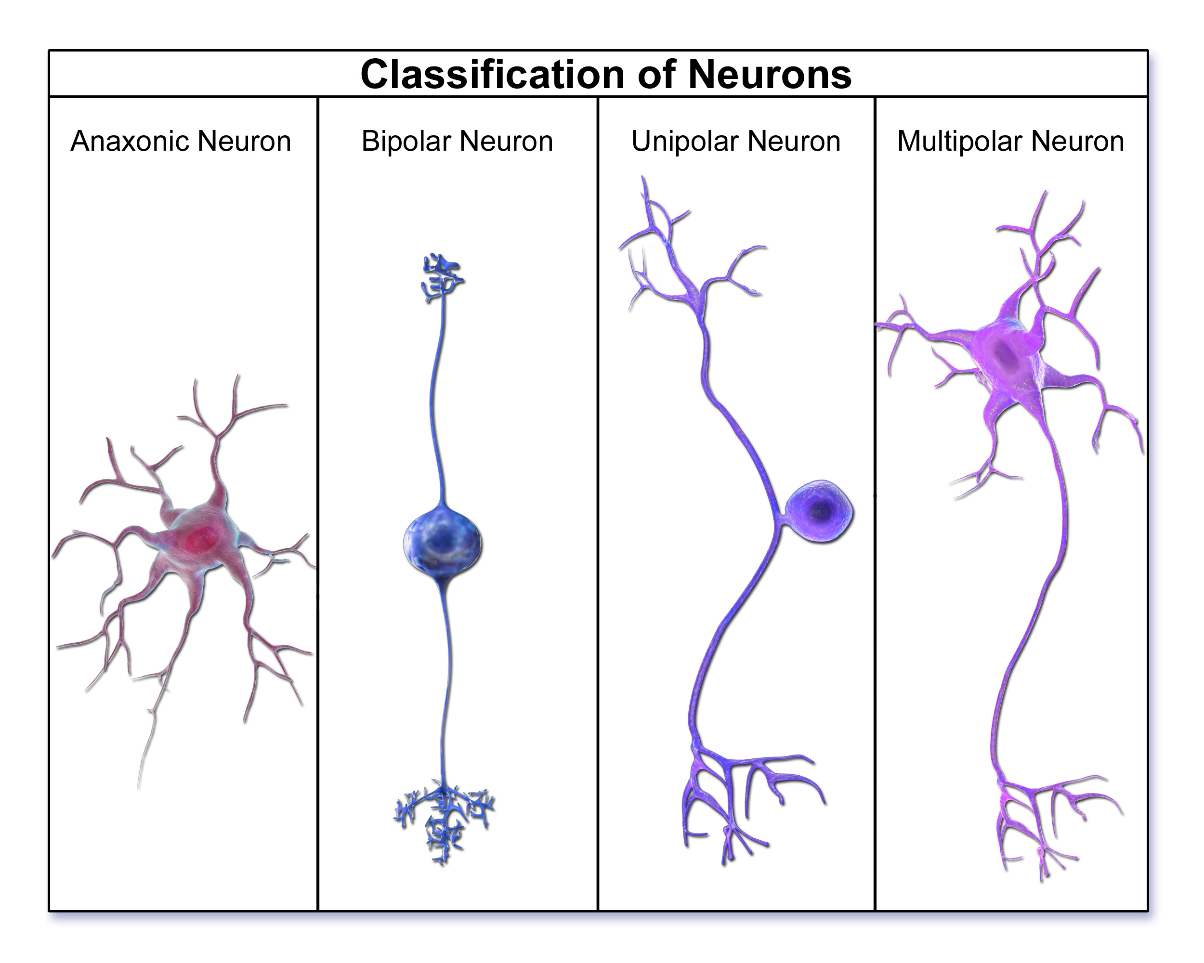
What are the classes of neurons?
Multipolar (many dendrites)
bipolar (1 dendrite + 1 axon)
unipolar (1 long axon and cell body branching off at a right angle)
anaxonic (no axon; only dendrites)
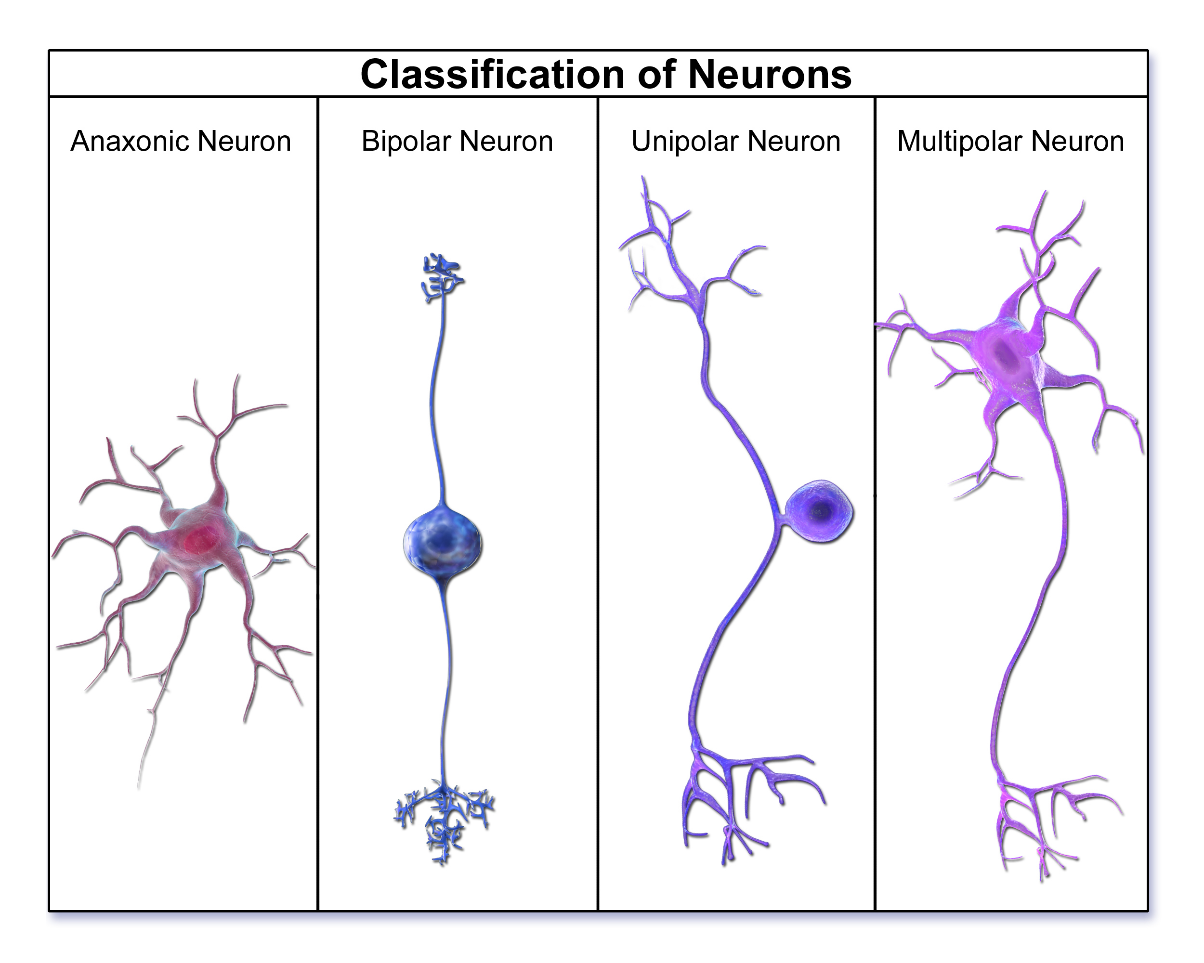
What does “excitability” mean?
able to contract and be stimulated
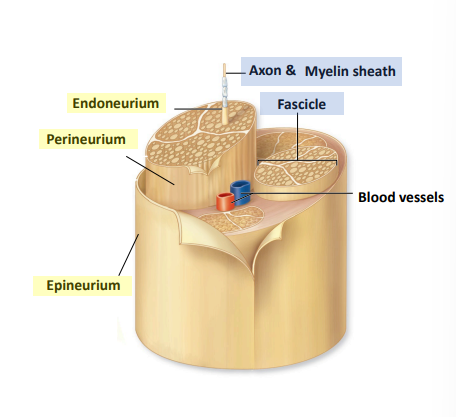
What are the types of nerve membranes?
epineurium
perineurium
endoneurium
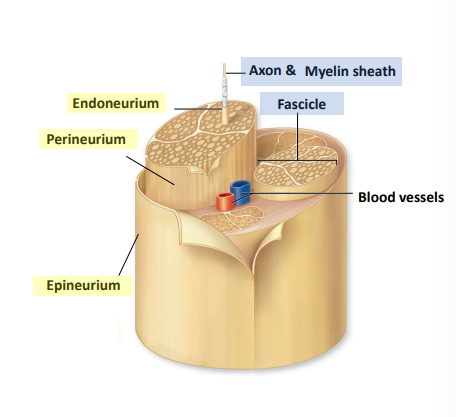
What is epineurium?
surrounds the entire nerve fiber (similar to the periosteum of bones)
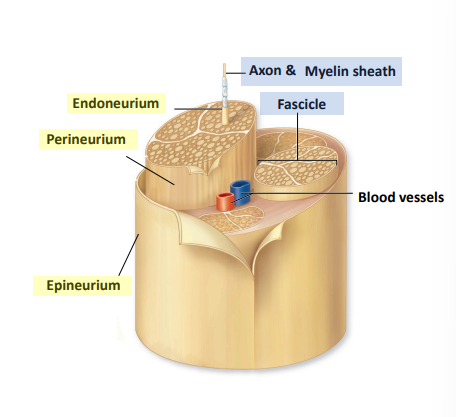
What is perineurium?
Each fiber is made up of a few fascicles, kinda likes straws. If you clump 3 or 4 straws together, that would be the nerve fiber. Perineurium covers the outside of the fascicles.
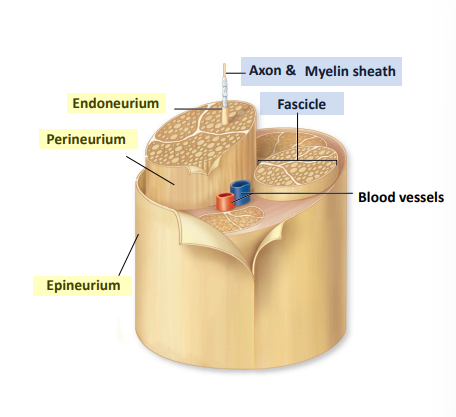
What is endoneurium?
If I have a few pipe cleaners INSIDE each of the straws (a few straws clumped together made a nerve fiber); the pipe cleaners are like the individual axon and myelin sheath. The empty space between each pipe cleaner is filled with endoneurium.
What is a motor unit?
1 motor neuron and all of the synaptic nobs that are attached to muscle fibers (there can be one, or there can be many)
What is resting neuron potential?
-70mV
What controls neuron potential?
The movement of ions through channels or with the help of pumps. There is no ion movement when the nerve is at rest (resting neuron potential is -70mV)
What are graded potentials?
small, short-lived charges. There is a -55mV threshold that needs to be reached in order for the the nerve to be excited. Graded potentials move the neuron potential from -70mV to the -55mV threshold. Na+ channels open, causing the neuron potential to start to rise (trending in the positive direction)
What is an excitatory post-synaptic potential (EPSP)?
a temp change in electrical potential of the neuron’s membrane that makes a neuron MORE likely to fire an action potential
What is an inhibitory post-synaptic potential (IPSP)
a change in the electrical potential of the neuron’s membrane that makes a neuron LESS likely to fire an action potential
What is the “all-or-nothing” law?
once the threshold is reached, the action potential is initiated and there is no stopping it
What are the processes of an action potential?
depolarization (negative value, like -70mV, becomes more positive)
repolarization (positive values like 30mV, becomes more negative)
What is the entire process of a membrane potential?
1.) initial stimulation (-70mV resting potential)
2.) Chem-gated Na+ channels open in the dendrites and cell body
3.) Na+ moves INTO the cell (once enough Na+ is in the cell, -50mV threshold is reached)
4.) Na+ continue to enter the cell; continued depolarization (+30mV)
5.) voltage K+ channels fully open, K+ EXITS axon (return to -70mV)
*The membrane potential is fixed (-70mV), but K+ and Na+ are on the wrong sides of the cell membrane
6.) voltage-gated Na+ channels open at the axon hillock (I’m guessing they sense that Na+ is on the wrong side of the membrane)
7.) Na+/K+ pumps fix ion concentrations (3 Na+ IN: 2 K+ OUT)
*steps 1-7 happen in one small section of neuron and then electrical signal jumps across the node of Ranvier and the process continues)
8.) once the AP reaches the axon terminal, NT released
9.) NT bind to receptor of the next cell
10.) post-synaptic dendrites open on the 2nd neuron
*repeat whole process again
What is the refactory period?
Absolute refactory period: a short time when no amount of stimulation will create another action potential.
Relative refactory period: another action potential can be initiated, but it takes a really strong stimulus (this period is after the absolute period; during hyperpolarization phase)
Where do NT attach on the the receptor neuron?
ligand receptors that are specific to each NT
How is the NT removed once it has relayed its signal?
diffusion: NT goes into the receptor cell
reuptake: NT reabsorbed into the cell that released them
degradation: enzymes break down the NT
What is Myasthenia Gravis?
autoimmune disease
neuromuscular junctions attacked
nerve signals interrupted, no skeletal muscle contractions
muscle weakness